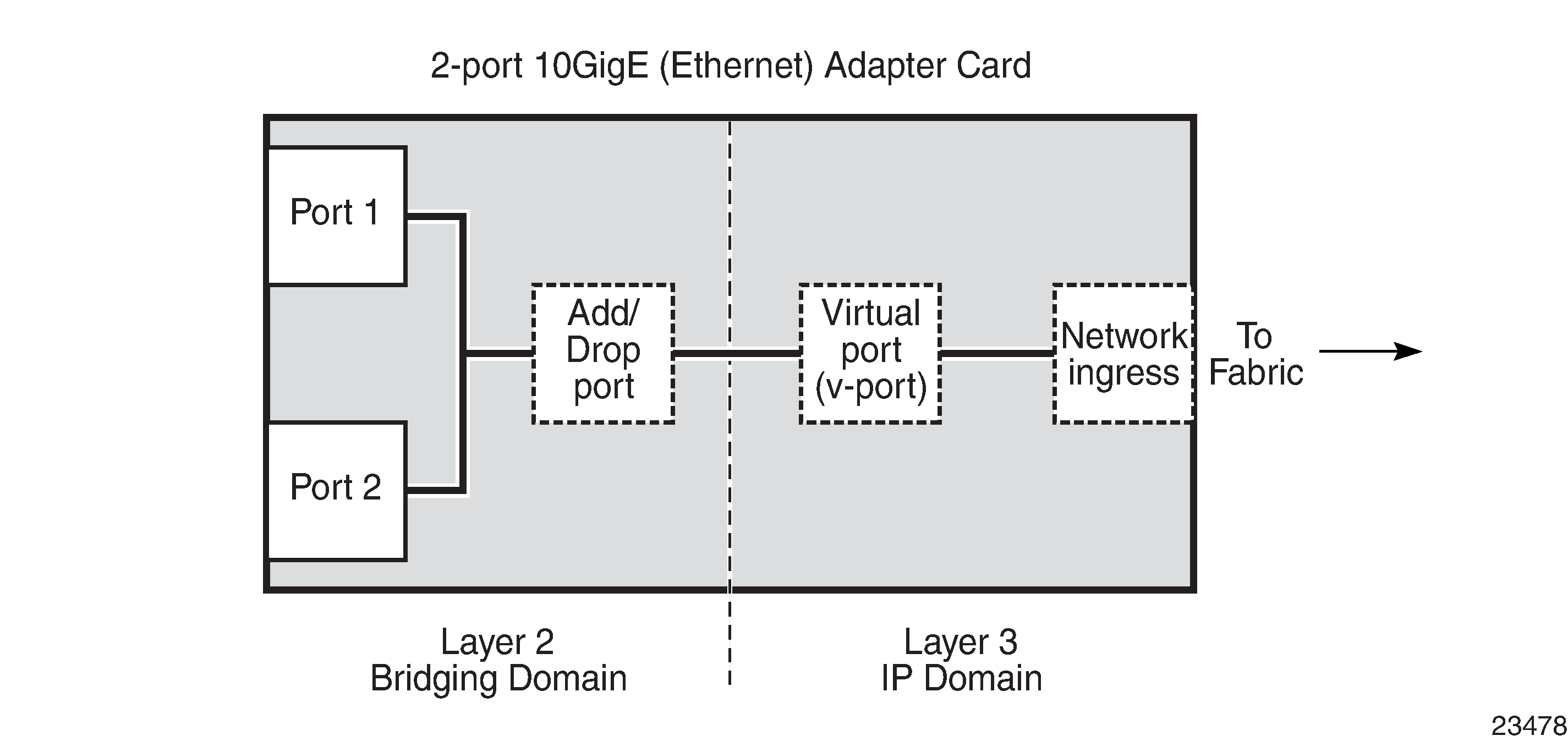This section contains overview information as well as information on the following topics:
Network QoS and Network Queue Policies on a Ring Adapter Card or Module
Considerations for Using Ring Adapter Card or Module QoS Policies
Figure: Ports on a 2-port 10GigE (Ethernet) Adapter Card shows a simplified diagram of the ports on a 2-port 10GigE (Ethernet) Adapter card (also known as a ring adapter card). The ports can also be conceptualized the same way for a 2-port 10GigE (Ethernet) module. A ring adapter card or module has physical Ethernet ports used for Ethernet bridging in a ring network (labeled Port 1 and Port 2 in the figure). These ports are referred to as the ring ports because they connect to the Ethernet ring. The ring ports operate on the Layer 2 bridging domain side of the ring adapter card or module, as does the add/drop port, which is an internal port on the card or module.
On the Layer 3 IP domain side of a ring adapter card or module, there is a virtual port (v-port) and a fabric port. The v-port is also an internal port. Its function is to help control traffic on the IP domain side of a ring adapter card or module.
To manage ring and add/drop traffic mapping to queues in the L2 bridging domain, a ring type network QoS policy can be configured for the ring at the adapter card level (under the config>card>mda context). To manage ring and add/drop traffic queuing and scheduling in the L2 bridging domain, network queue QoS policies can be configured for the ring ports and the add-drop port.
To manage add/drop traffic classification and remarking in the L3 IP domain, ip-interface type network QoS policies can be configured for router interfaces on the v-port. To manage add/drop traffic queuing and scheduling in the L3 IP domain, network queue QoS policies can be configured for the v-port and at network ingress at the adapter card level (under the config>card>mda context).
